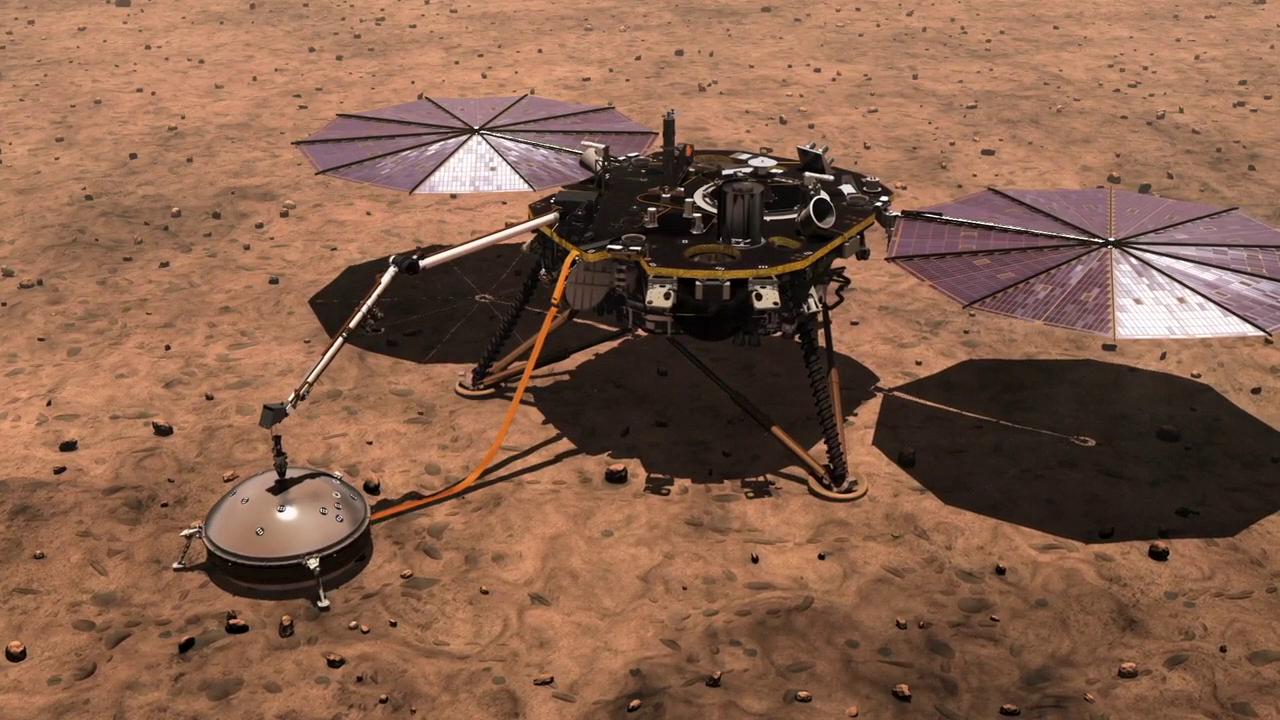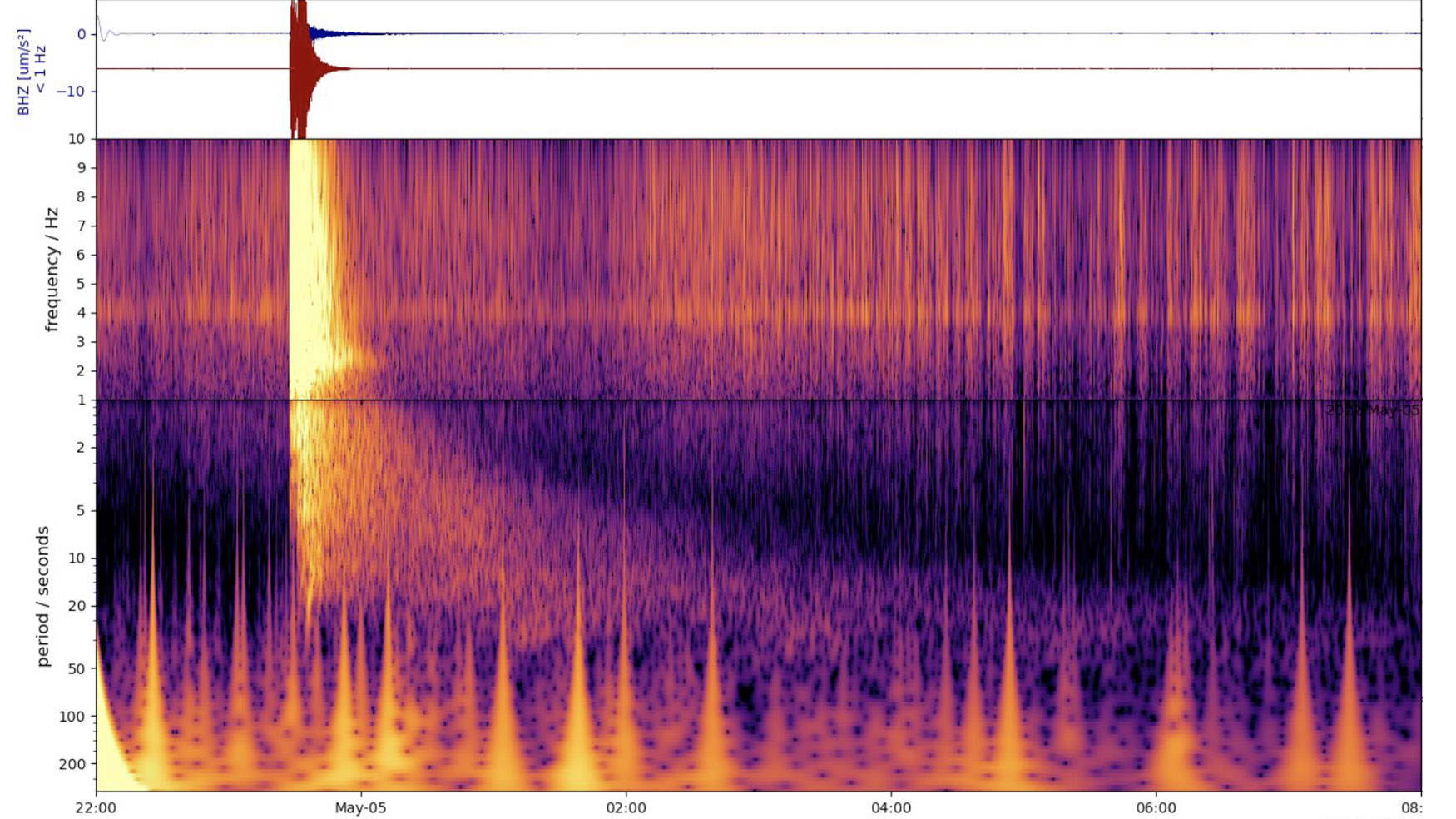NASA's InSight lander detects the biggest quake on Mars yet

A magnitude 5 quake shook the surface of Mars on May 4, the strongest temblor ever detected not only on Mars but on any planet besides Earth.
The marsquake, detected by NASA's InSight lander, surpassed the previous record-holder, a 4.2-magnitude quake that took place in August 2021.
"NASA InSight's team & partners just received prelim data from Mars on what's believed to be the largest seismic activity ever recorded on another planet!" NASA Associate Administrator for Science Thomas Zurbuchen said on Twitter. "Preliminary estimate: Magnitude 5 event. Must be patient as teams analyze the data."
In Earth terms, a magnitude 5 earthquake would be no big deal. On our planet, such earthquakes occur half a million times per year and rarely cause serious damage. (They may throw stuff off shelves and make windows crack, according to Los Angeles Times, and would wake you up at night).
Mars, however, is tectonically much more peaceful, and magnitude 5 is about as powerful a quake as scientists hoped for when they sent InSight to the Red Planet in 2018.
Related: Marsquakes reveal Red Planet has surprisingly large core, thin crust

"Since we set our seismometer down in December 2018, we've been waiting for 'the big one,'" Bruce Banerdt, InSight's principal investigator at NASA's Jet Propulsion Laboratory in California, which leads the mission, said in a statement. "This quake is sure to provide a view into the planet like no other."
Get the Space.com Newsletter
Breaking space news, the latest updates on rocket launches, skywatching events and more!
The team still knows very little about the record-breaking marsquake and will have to analyze the data to determine its location and source.
InSight landed in the Elysium Planitia, a broad plain straddling the planet's equator, on Nov. 26, 2018, and is fitted with a highly sensitive seismometer built by the French space agency CNES. The instrument allows geologists to remotely peek inside the planet's interior by detecting and analyzing seismic waves passing through the geological layers of Mars. By comparing what they see on the Red Planet with what they know about the behavior of seismic waves on Earth, the geologists can determine the depth and composition of these layers: the crust, mantle and core.
In its nearly 1,300 days on Mars, InSight has detected more than 1,313 marsquakes. The lander's primary mission officially ended in 2020, but NASA has since continued the mission.
However, the lander is having trouble harvesting enough solar power to continue operations. Because of seasonal weather patterns, the amount of dust in the air has increased dramatically since InSight's arrival, obscuring the sun.
A local dust storm back in January sent the spacecraft into safe mode and raised concerns about how long the mission could continue. And just a few days after its new powerful find, on May 7, the spacecraft again hit perilously low levels of power.
Follow Tereza Pultarova on Twitter @TerezaPultarova. Follow us on Twitter @Spacedotcom and on Facebook.
Join our Space Forums to keep talking space on the latest missions, night sky and more! And if you have a news tip, correction or comment, let us know at: community@space.com.

Tereza is a London-based science and technology journalist, aspiring fiction writer and amateur gymnast. Originally from Prague, the Czech Republic, she spent the first seven years of her career working as a reporter, script-writer and presenter for various TV programmes of the Czech Public Service Television. She later took a career break to pursue further education and added a Master's in Science from the International Space University, France, to her Bachelor's in Journalism and Master's in Cultural Anthropology from Prague's Charles University. She worked as a reporter at the Engineering and Technology magazine, freelanced for a range of publications including Live Science, Space.com, Professional Engineering, Via Satellite and Space News and served as a maternity cover science editor at the European Space Agency.









